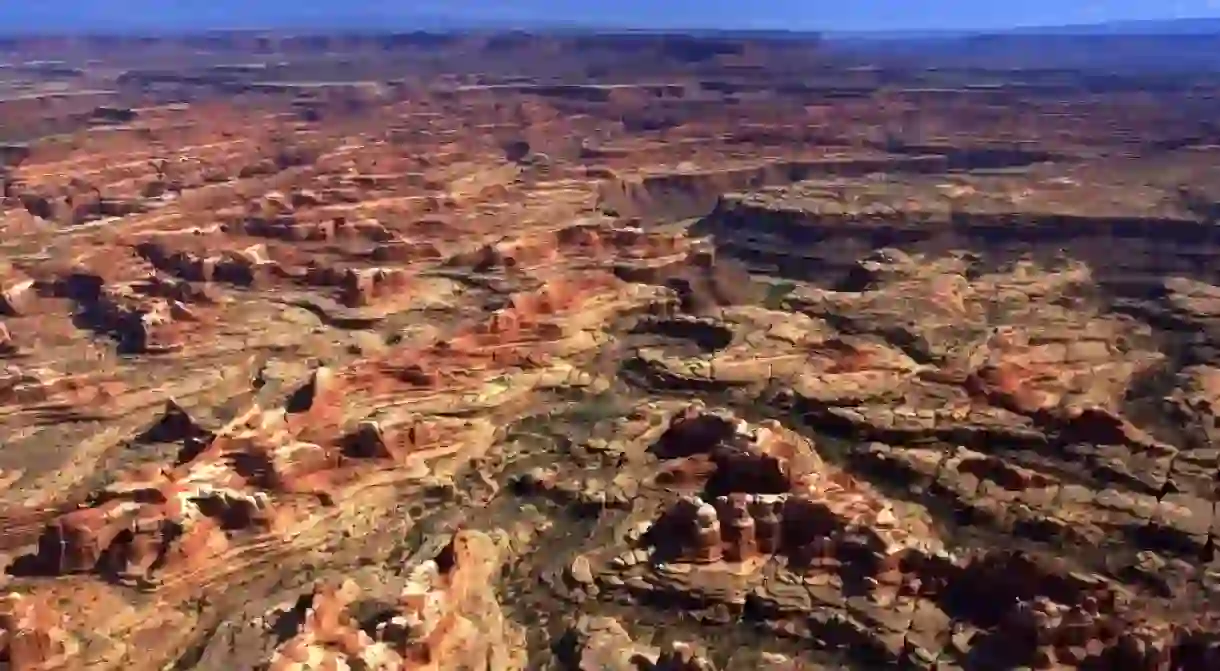15 of the Trippiest Sights in the US

Mother Nature has always had a knack for astonishing us. Whether it’s the majestic mountains towering high above the clouds, vast forests painted green with moss or underground caves studded with Earth’s crystals, the most grandiose expressions of untamed beauty and awe are those created by our planet. Surreal and mind-boggling, here are America’s wildest sights.
The Wave, Arizona
Architectural Landmark

In the Coyote Buttes of the Colorado Plateau, the Wave is well known to esteemed hikers and photographers. Although fragile, this rock formation is open to those who want to explore its rolling “waves” of colorful sandstone. A permit is required.
Mendenhall Glacier Ice Cave, Alaska
Natural Feature
Formed by glacial melt in Alaska, the Mendenhall Glacier ice cave is reachable by kayak, after which you must ice climb to the entrance of the partially hollowed-out glacier. Once inside, you’ll find shimmering blue walls – an otherworldly vision, but a testament to our rapidly changing climate.
Bonneville Salt Flats, Utah
Natural Feature

The Bonneville Salt Flats were once covered by the ancient Lake Bonneville. Although the flats still flood occasionally, the area is marked by miles of white salt and strangely flat terrain known for its reflections of the cloud-studded skies above. The site in Utah is the preferred location for daredevil racers trying to break the world land-speed record.
Antelope Canyon, Arizona
Natural Feature

The sandstone walls of Antelope Canyon were formed by thousands of years of erosion – mostly due to flash flooding. As rainwater rushes down the basin, it picks up sand and debris, entering the various passageways and carving the undulating shapes that are visible today.
Grand Prismatic Spring, Wyoming
Park

Hamilton Pool Preserve, Texas
Natural Feature, Swimming Pool
The Banyan Tree, Hawaii
Natural Feature

Sheriff William O Smith planted this banyan tree in Lahaina after receiving it as a gift from missionaries in India. Planted in 1873 when it was just 8ft (2m) tall, it has grown to a whopping 60ft (18m) – among the largest trees of its kind in the US. In addition to the main trunk, it has 16 major trunks, and its canopy spreads over half an acre (0.2ha).
The Maze, Utah
Park
Kelso Dunes, California
Architectural Landmark, Natural Feature

The Mojave Desert, stretching across 47,000sqmi (121,729sqkm) of arid lands, is the driest desert in North America. Kelso Dunes, the largest area of aeolian sand deposits in the Mojave, is ideal for sandboarding, off-roading or photoshoots.
Devils Tower, Wyoming
Natural Feature
Carlsbad Caverns, New Mexico
Park, Theater

Horseshoe Bend, Arizona
Natural Feature

Just outside Grand Canyon National Park, this horseshoe-shaped bend in the Colorado River is defined by emerald waters and vivid mineral-rich canyon walls. It’s accessible via a long hike if you want to get close to it, but you’ll find the best views from the clifftops just off Route 89.
Bryce Canyon National Park, Utah
Park

Sequoia National Park, California
Forest, Park
Nā Pali Coast State Wilderness Park, Hawaii
Park













